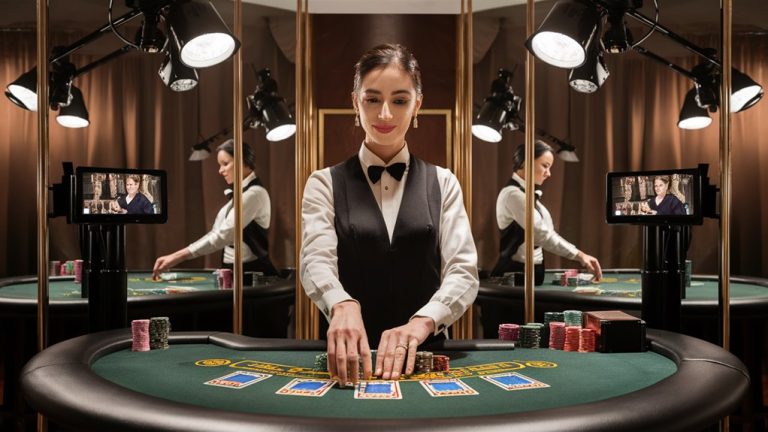
A New Model of Betting System: Feather & Ember, Revolutionizing the Gaming Industry
Feather & Ember introduces a revolutionary fusion of traditional and new gaming methods, reshaping the betting industry with a new approach. This model allows small startups to develop their technology in a peaceful environment.
Era of Game Innovation
Light wagering alternatives at Feather & Ember’s high-quality tables could represent an entirely new way of risk management and social gambling practice. In exclusive and accessible gaming environments, its sophisticated blend offers both an opportunity to try different strategies and engage in social entertainment.
Market Impact and Player Experience
Now they mix quite well. Giving professional gamblers and beginner players a chance to participate in the same room creates a distinctly mixed betting environment, fostering a different atmosphere. The innovative betting model has enhanced player participation while maintaining traditional gambling values intact. By strategically combining all sorts of betting styles, a business model based on gaming in small towns or large urban centers emerges, appealing equally to all types of customers.
Future Gaming Landscape
Today, “eager2014” is once again evolving. Betting has more contributions from writers at Eager-2014, with a mixed betting system on one table, combining both limit and no-limit betting.
A Comprehensive Introduction to the Evolution of Mixed-Betting Tables
Mixed Limit Games Break the Video Poker Industry’s Bets Forever
The advent of mixed-limit play in the mid-1990s initiated a new age for poker betting strategy and money management.
Mixed-limit gameplay entered a golden age when casinos started introducing high-limit, low-limit tables, each at the same time (and thus any order of betting after another) on individual hands.
Strategic Adaptation in a Mixed-Limit Environment
Mixed-limit poker requires strategy adjustments by players in betting format.
- Techniques for optimal fixed-limit play center on the extraction of maximum value for strong holdings, encapsulated within particular bet-sizing.
- As the game transitions into ‘no-limit,’ players will increasingly have to build protective barriers against the effects of larger variance and pick out the best spots to engage with maximum opponents.
Mastering Many Prayers
The complexity of mixed-limit gaming challenges the very limits of player versatility.
- Fixed-limit specialists struggle with unlimited betting rounds.
- No-limit poker specialists tend to play suboptimally in capped betting situations.
Modern mixed-limit games require comprehensive mastery of both forms to leave nothing to chance in preparation for multiple modes of play with different structures.
Key Elements of Success in Mixed-Limit Environments
- Bankroll adaptation to staking levels
- Risk estimation for different kinds of bets
- Strategic flexibility between limits
- Optimization of value in amplified and limited segments of the game
- Correct reading of signs from opponents and applying pressure when and where it counts
Arc-lashed Bets advanced format continues to challenge players while also adding depth to the strategic landscape.
Adapting to Various Play Styles
Understanding Poker Playing Styles in Broad Context: A Strategic Join
In the campaign for professional poker play, one key task is to understand all playing styles and develop countermeasures. As the game has moved from mixed-limit gaming into a more specialized breed of contest for points, successful players employ systematic approaches to maximize retention values based on competitive situations.
Countering Some Styles of Play
- Tight-Conservative Players: Exploit these opponents by applying calculated pressure. Their folding patterns make ideal bluffing opportunities, especially from position or during late-street aggression.
- Slack-Aggressive Opponents: Lay down rules that discourage them from entering pots. Get these aggressive players to make costly mistakes with weak hands while maximizing value on your premium ones.
- Passive Players: Create perfect conditions for thin value betting and exploit their defensive tendencies. These players call with weaker hands but rarely raise.
- Tricky Players: Advanced pattern recognition is necessary to deal with opponents who change their approach regularly. Timing and 먹튀검증커뮤니티 betting size tells are key for counter-strategies that maintain positional advantage.
Adaptive Strategy Implementation
To succeed in poker, one must continuously observe and adopt new strategies as the situation changes. This dynamic approach presents opportunities to benefit from opponents’ mistakes or tendencies and protect against strength when necessary.
Psychology Behind Dual-Tier Tables
The essential nature of a higher-stakes approach necessitates a lower level, one which modern Internet card rooms have made possible relatively recently. From level to level, each set the tone for those above and below it, shaping their progress.
- Lower-tier participants typically perform measured approaches, while high-stakes players are more aggressive.

Strategic Dynamics and Learning Opportunities
The psychology of dual-tier tables creates a natural learning environment. Entry-level players are in a favorable position to observe and absorb the more advanced strategies of higher-stakes action, making it an ongoing mentoring process.
Upper-tier participants often express their knowledge in elaborate play patterns, though this can sometimes lead to strategic overreach.
Maximizing Dual-Tier Advantages
The fundamental elements are not limited to money matters but extend into standing in society or opportunities for learning, as well as danger zones that divide friends and foes alike.
As players across levels influence each other’s decisions, the interaction between tiers generates unique decision-making rhythms. Understanding these multi-level dynamics allows players to optimize their strategy regardless of stake position.
Key Psychological Factors:
- The importance of skill level and perception
- Opportunities for cross-tier learning
- Risk premiums varying across levels
- Behavioral influences transitioning between stages
With a broad understanding of dual-tier psychology, this guide provides cutting-edge information for any player aiming to stay ahead of the game in today’s multi-level casino environment.
Transforming the Boundaries of the Traditional Casino
Modern casinos are transforming their environments in all three dimensions: innovative physical space designs, more convenient player activities, and the integration of cutting-edge gaming techniques from researchers at home computers or other devices.
By now, the most successful venues offer a seamless gaming experience, welcoming both big spenders and beginners alike.
Strategic Space Capital and Player Synthesis
Traditional velvet ropes and VIP sections that once marked out gaming floors belong to an earlier century—the dual-tier gaming environment is now more than this.
- Today’s casino spaces are designed to reflect level transitions and player flows, including:
- A dynamic lighting scheme
- The correct placement of playing tables
- An integrated, open gaming area
These design elements allow natural movement from stage to stage on the gaming floor without interruption, enhancing the gaming experience.
Technology-Driven Advanced Gaming
Next-generation casino facilities break through traditional barriers with:
- Mobile betting stations
- Hybrid gaming tables
- Digital integration systems
- Flexible betting choices
This technological progress helps novices develop while giving experienced players the chance to switch cleanly between old and new casino games.
An Inclusive Gaming Experience
Modern casino success is built on creating a cross-platform environment where multi-tier users can live and work together. Features include:
- Transparent gaming rules
- Adjustable betting systems
- Socially integrated table designs
- Casino operators
New Music for Video Casinos
Joining up-and-coming restaurants and ultra-chic lounges, the video casino offers more than just a place to bet—it’s a gathering spot for people enjoying themselves as friends and equals.
Casino Social Interaction Throughout the Evolution
As gaming entered the digital era, solo gaming tastes gave way to more communal activities, with a peaceful atmosphere. The modern casino floor glows with a social energy where players connect via bets, sharing joy and sorrow together.
Digital Integration and Social Connection
The convergence of Internet-based markets and smart phone applications forms a seamless connection between the real world and digital trading markets. Gambler communities now thrive online, appearing under popular hashtags or as small towns on the web, bringing the community together.
The Impact of Millennials on Gaming Culture
Next-generation players are revolutionizing casino gaming by making it a collective social activity. New modes include:
- Group betting strategies
- Collaborative resources
- Social-media content creation
- Live game streaming
Today, casino gaming is a team event, with creation workers renovating traditional games and uploading them onto platforms like TikTok.
Modern Gambling Communities
Social elements have reshaped the gambling environment, creating new interaction motifs between players and transforming casinos into social hubs for building community.
This shift has turned the casino from a simple gambling space into a full-blown entertainment complex where gaming plays a central role in connecting people.



